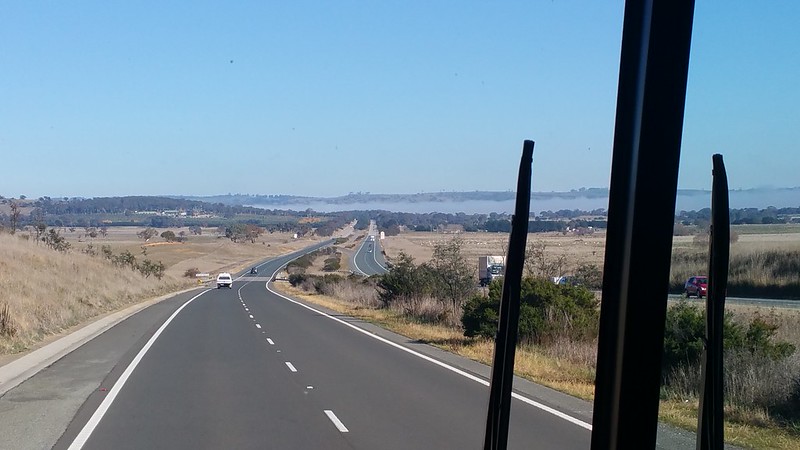
Hume Highway
The Murray buses plying the Sydney-Canberra route take 3 hours each way. 3 hours during which the bus - adhering to a strict policy of producing a peaceful environment for the passengers - does not allow music or radio to be played during the ride. As I arrived with just a few minutes to spare before the bus journey was to begin, I had no recourse but to slot myself into the front of the entire bus - located closest to the bus driver, a very friendly driver who had "Derek" written on his name tag.
All the other passengers seemed to immediately settle into various sleeping positions, but I was forced to sit bolt-upright because of the massive bag of books I was carrying on my lap, wide awake and at attention, contemplating the prospect of having 3 more hours of this. Besides the driver's introduction and farewell at the start and end of the journey, there were basically to be no other sounds except the sounds of the bus being on the road. So I began a conversation with Derek. "Isn't it boring to drive for 3 hours without being able to listen to anything?" "What do you think!!" He chuckled.
I found out he had been driving this route for over 17 years, and after he learnt that it was the first time I was taking this bus, he began pointing out some of the invisible "landmarks" of the Hume Highway. The old highway. The old river. Trees that had been specially planted in Australia to be used to make matches. Lake George. And of course, he pointed out the endless VC stops. I assumed at first they were just rest stops which were perhaps abbreviated to as Visitor Centres, until Derek explained they were memorial rest stops named after war heroes who were Victoria Cross recipients from the WWII period onwards!
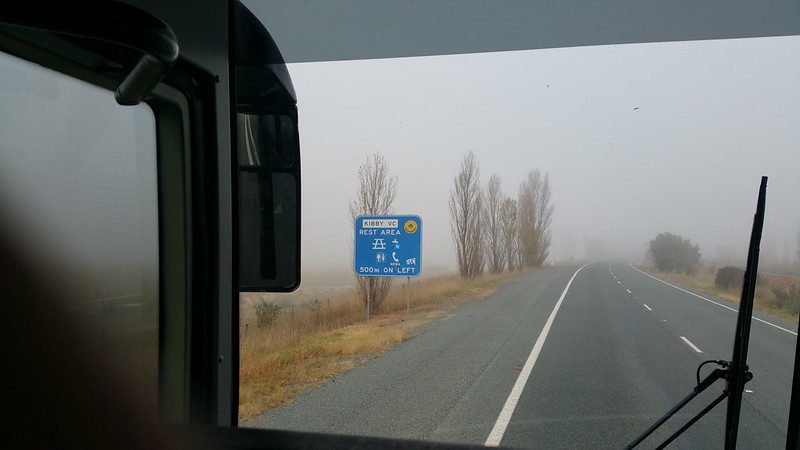
Sergeant William Henry Kibby
Conflicts/Operations - Second World War, 1939-1945
VC Citation
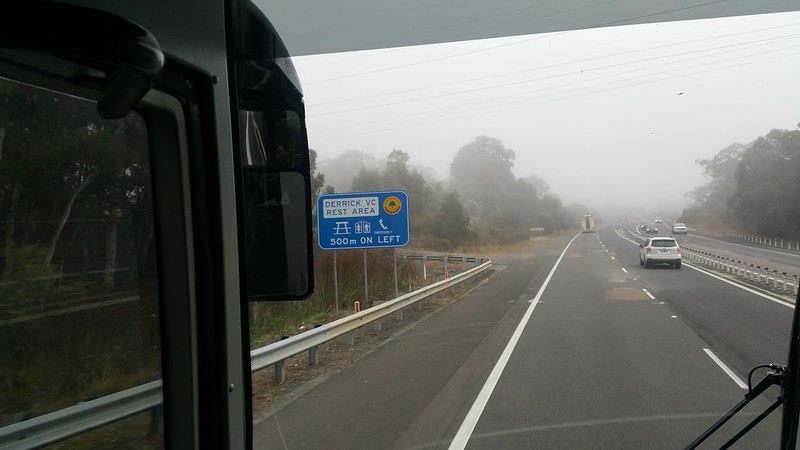
Conflicts/Operations - Second World War, 1939-1945
VC Citation
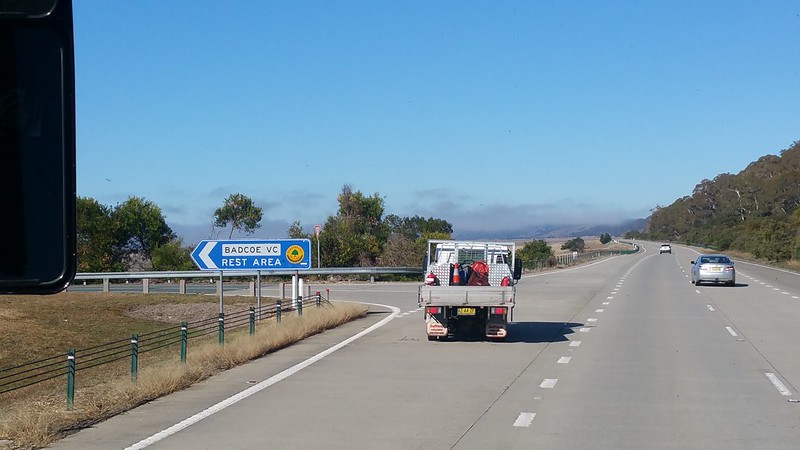
Conflicts/Operations - Vietnam, 1962-1975
VC Citation
That was the first time I heard about the Remembrance Driveway, a 320-km memorial driveway spanning the main highway connecting Sydney (Australia's largest city and the state capital of New South Wales) and Canberra (the national capital of Australia). The road begins in Sydney's CBD at Macquarie Place and ends in Treloar Crescent at the Australian War Memorial.
Excerpt from the documentary "For Valour" - "The Australian stories of the Men And Actions worthy of the Victoria Cross, Australia's highest Military Honour"
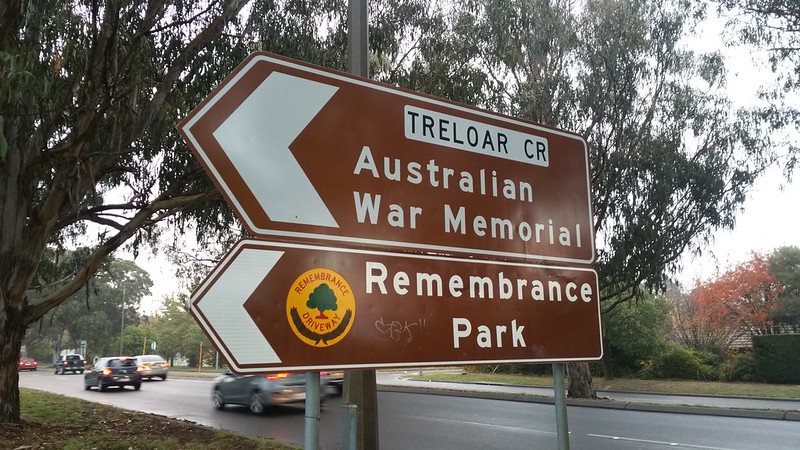
Road Sign for Treloar Cr Australian War Memorial / Remembrance Park
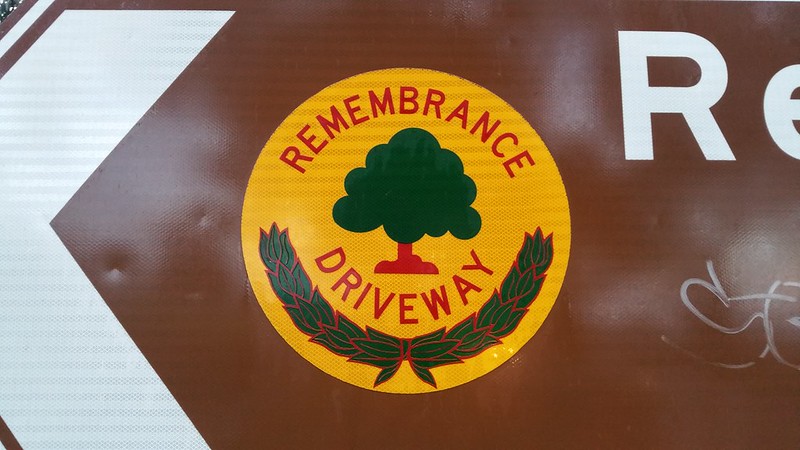
Remembrance Driveway Symbol
The official Remembrance Driveway Website notes that the very idea could be traced back to the time right after World War I when in the UK, the office of the King's Highway isued a pamphlet entitled "Roads of Remembrance as War memorials".
It appears the main argument was to combine memorialisation together with improvements to local infrastructure, allowing monuments to be both functional as well as dignified commemorations of war heroes. I haven't had the chance to locate or read the booklet in person, but from the British Library Social Science blog there is an extract here:
"It seems to us that the first principle of a war memorial should be that everyone can participate in any benefits which it confers; Secondly and hardly less important, that it should be of a permanent character-something that will last of all time. Roads and bridges comply with these two conditions."
Interestingly it seems that the actual building of memorial avenues and roads of rememberance was largely taken on by Britain's former colonies rather than in Britain itself. An article on Canada's WWI memorials:
"In November 1918, Canadians turned from waging war to the duty of commemorating the dead. This traditionally meant statuary: thousands of statues, obelisks, cairns, steles, shafts, cenotaphs, and crosses were erected in Canada in the years following the war. There were those, however, who believed "the time when it was the custom to place bronze effigies of soldiers on granite pillars as an excuse for forgetting deeds of valour is happily past." They promoted instead practical memorials such as hospitals, schools, halls, and libraries. These memorials were "designed with a view to their being of service to the communities in which they will be erected." From this school of thought came the idea for Roads of Remembrance."
A lot of these booklets and websites about roads of remembrance also speak of these roads being lined with trees and the significance of the tree as the symbol of life triumphing over death; that bombed-out splintered tree on the battlefield springing back to life amidst human conflict", although for the most part I find that if you're a driver on the road, one's eyes are glued to the road; that hard tarmac road as memory lane itself.
Likewise, perhaps this is how the Kokoda Trail makes sense. Early on in my trip, I climbed to Mt Ainslie's Lookout point via the Kokoda Trail, a beautiful and scenic pathway up the mountain which has been mapped over with waypoints telling the harrowing story of the Kokoda Trail 1942 World War II battle between the Australians and the Japanese.
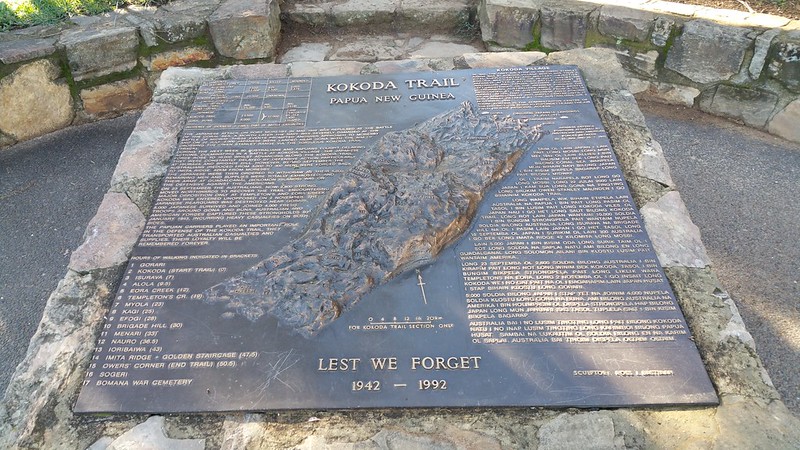
The real Kokoda Trail in Papua New Guinea is apparently really hard and harsh, consisting of a track that can only be walked single-file. Even without the horrors of war, the conditions of the track are already trying - "hot, humid days with intensely cold nights, torrential rainfall and the risk of endemic tropical diseases such as malaria make it a challenging trek." Its obvious that Mt Ainslie with its easy footpath and gorgeous scenic viewpoints looks nothing like the original Kokoda Track that has been mapped over it.
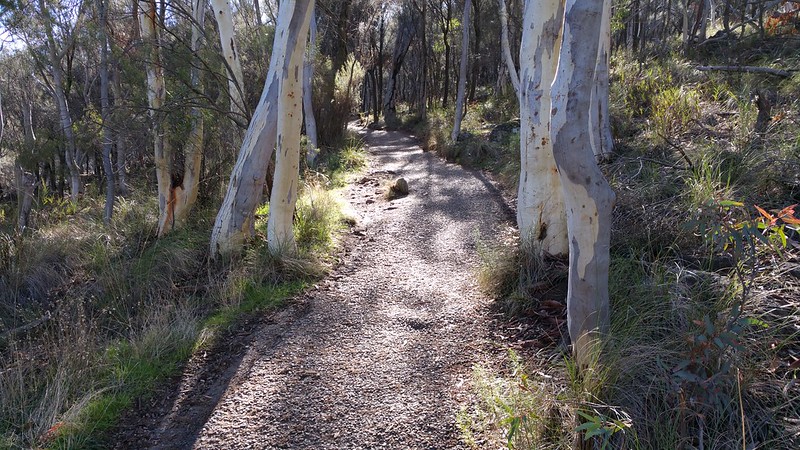
Kokoda Trail, Mt Ainslie, Canberra
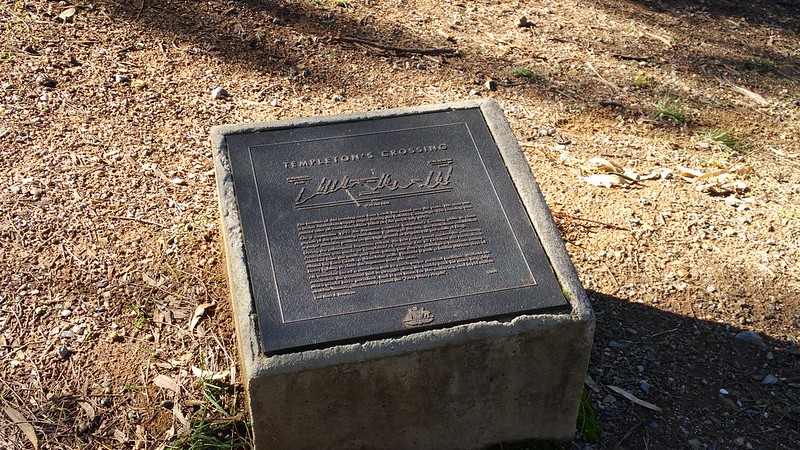
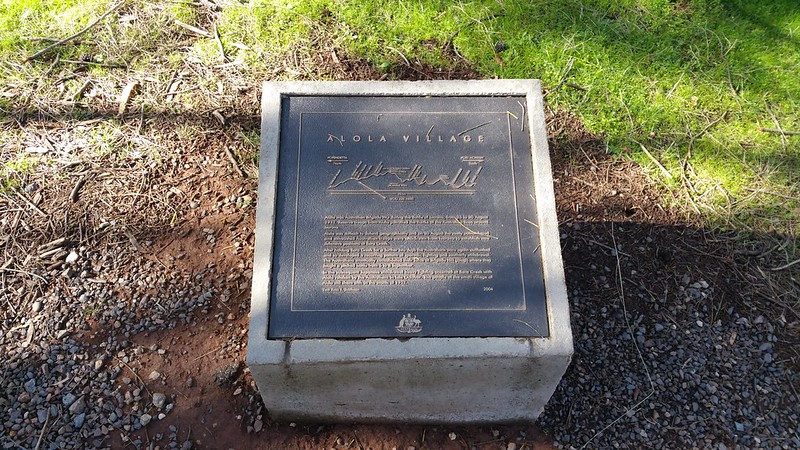
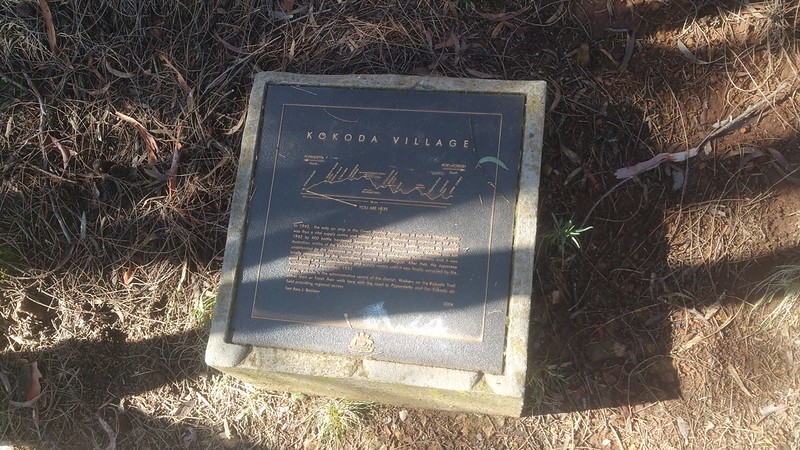
"Kokoda Village" (note the YOU ARE HERE arrow on this plaque, and all of the other plaques on this walking trail)
So how is a trip down a modern road/trail and the memory of war related? I suppose if I had to rationalise it, there is something to be said about the road trip - the long car/bus/road journey - as something which forces the traveller to take the time and space to reflect and remember things from the past. The journey is punctuated by the appearance of these road signs telling us of the names of war heroes (although on an aside I do wonder, if we remember the names of war heroes, then why not the names of prominent scientists or artists or people in other occupations who have also contributed to nation building?); and as one clocks more and more mileage and progresses closer and closer to one's destination, there is an idea of having to find closure or to mentally 'complete' that internal journey into the past.
Another significant place located on the side of Mt Ainslie is the Aboriginal Memorial Plaque, a memorial (established privately by local residents rather than by any govt) which pays respects to the important yet oft-overlooked contributions of Indigenous service personnel in Australia.
Perhaps one of the most complex and difficult challenges for the Australian War Memorial today is to help reconcile Australia with Australia's long and dark history of rendering Aboriginals and other indigenous people invisible in its military and in its histories.
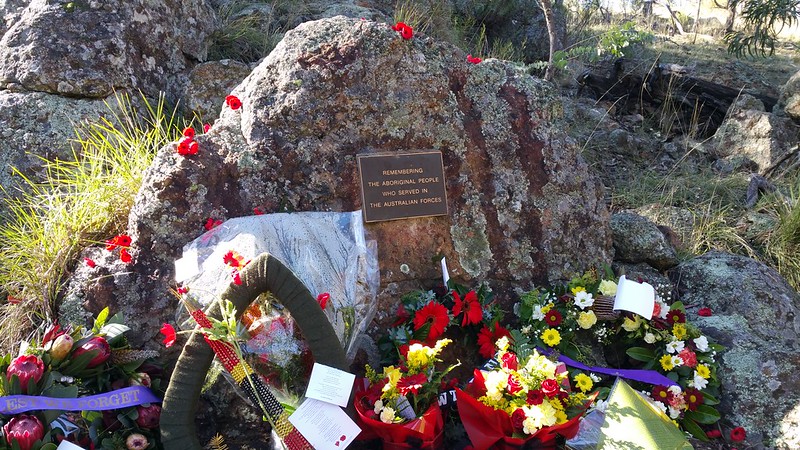
For could you not also describe the colonisation process from 1788 as a kind of war waged by the white settlers against the black Aboriginals? - which has ultimately been the deadliest and longest 'war' that has been running throughout Australia's history?
No comments:
Post a Comment